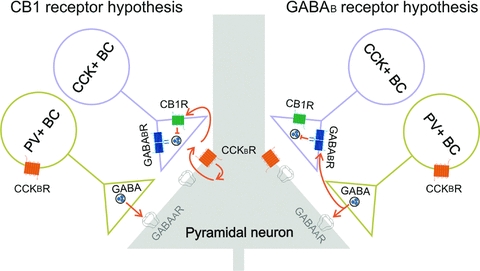Figure 1. Schematic drawing illustrating two alternative pathways to explain the mechanisms underlying the CCK-induced suppression of GABA release from CCK+ basket cells.

Left, according to the ‘CB1 receptor hypothesis’, CCK binds to CCKB receptors on pyramidal cells (Földy et al. 2007), leading to endocannabinoid synthesis. The postsynaptically released endocannabinoid would then bind to presynaptic CB1 receptors located on the axon terminals of CCK+ BCs, resulting in suppression of GABA release. In a separate series of events, CCK is proposed to bind to CCK receptors on PV+ BCs, causing strong depolarization and firing of PV+ BC, leading to sharp increases in the spontaneous IPSC frequency recorded from the CA1 pyramidal cells (e.g. Fig. 1 in Földy et al. 2007). Right, according to the ‘GABAB receptor hypothesis’, there is only a single direct action of CCK, namely, the activation of excitatory CCK receptors on PV+ BCs, resulting in action potential discharges in PV+ BCs. The spiking in PV+ BCs, in turn, leads to the release of GABA that reaches and activates presynaptic GABAB receptors on CCK+ BCs, resulting in a suppression of GABA release from the CCK+ BCs.
